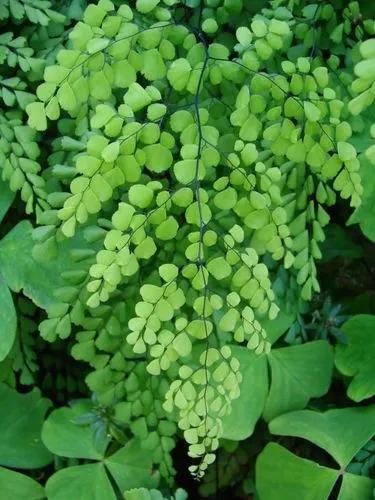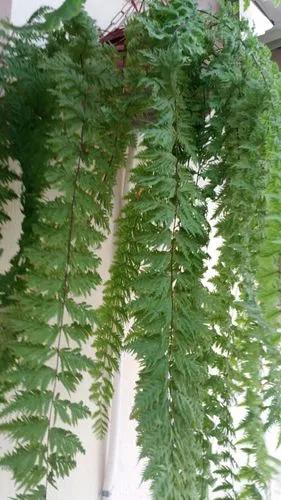Maidenhair genus of ferns, originated in the Brazilian tropics, contains almost 200 different species and can now be found growing in temperate climates. With proper care it can live for a long while, growing more beautiful with each passing year.
Maidenhair Fern Care
Adiantum raddianum



The graceful fronds can sometimes reach 20-24 inches in length and are covered in tiny, triangular, bright green leaflets called pinnae. During the spring, a Maidenhair Fern may produce fronds that seem to have tiny dark brown “spots” on the underside of the leaf edges. The “spots” are really fern spores and this is how the fern reproduces in nature. These specialized fronds do not live as long as regular fronds and if you don’t like the way they look just cut them off; it won’t hurt the plant at all.
How to Care for the Plant

Water

Water your fern using a watering can with a long spout. That way, you can apply a water directly to a top of a potting soil. This is particularly relevant with hanging ferns where a fronds often hang down in quite thick curtains. You can maneuver a long nozzle between a fronds until it is over a soil.

Pruning

It is important because damaged leaves and stems can actually be an energy drain on your plant. By removing those dead parts, you're taking some of that work off your plant’s plate and allowing it to divert its energy into healthy leaves and new growth!

Fertilizer

Simply apply the fertilizer around the base of the plant, extending to the drip line. For vegetables, place the fertilizer in a strip parallel to the planting row. Water-soluble fertilizers are faster acting but must be applied more frequently. This method gives plants food while you water.

Sunlight

Needs bright, indirect sunlight.

Soil

Loamy soil, a relatively even mix of sand, silt, and clay, feels fine-textured and slightly damp. It has ideal characteristics for gardening, lawns, and shrubs. Loamy soil has great structure, adequate drainage, is moisture-retaining, full of nutrients, easily cultivated and it warms up quickly in spring, but doesn't dry out quickly in summer.

Propagation

These plants can be repotted annually or biannually, depending on the pot size and growth rate. They don't mind being a little crowded. Do repot them when the roots fill the pot. To repot successfully:
Use a knife or spade to divide the roots.Maintain a minimum of two to three healthy fronds within each division.Plant each section into its own pot, and be sure to water them well.Do not fertilize the repotted ferns right away, as this may burn the roots.

Temperature

Maidenhair Ferns must have consistent temperatures. They can handle warmth or cold, but prefer warm areas. Never place a Maidenhair Fern where the temperature fluctuates.

Container

Choose a pot with drainage holes, which also ensures potting soil doesn't stay too wet after watering your houseplants. The excess can freely escape out the bottom of the container, allowing oxygen to make its way to plant roots.

Additional

All ferns love moisture and should be given humid conditions. In living rooms and family rooms, stand their pots on trays of damp pebbles or clay granules. Ferns also love being misted at regular intervals with tepid, soft water unless the humidity of the whole room is kept high through the use of a humidifier.

Popularity

2,770 people already have this plant 848 people have added this plant to their wishlists
Discover more plants with the list below
Related articles






